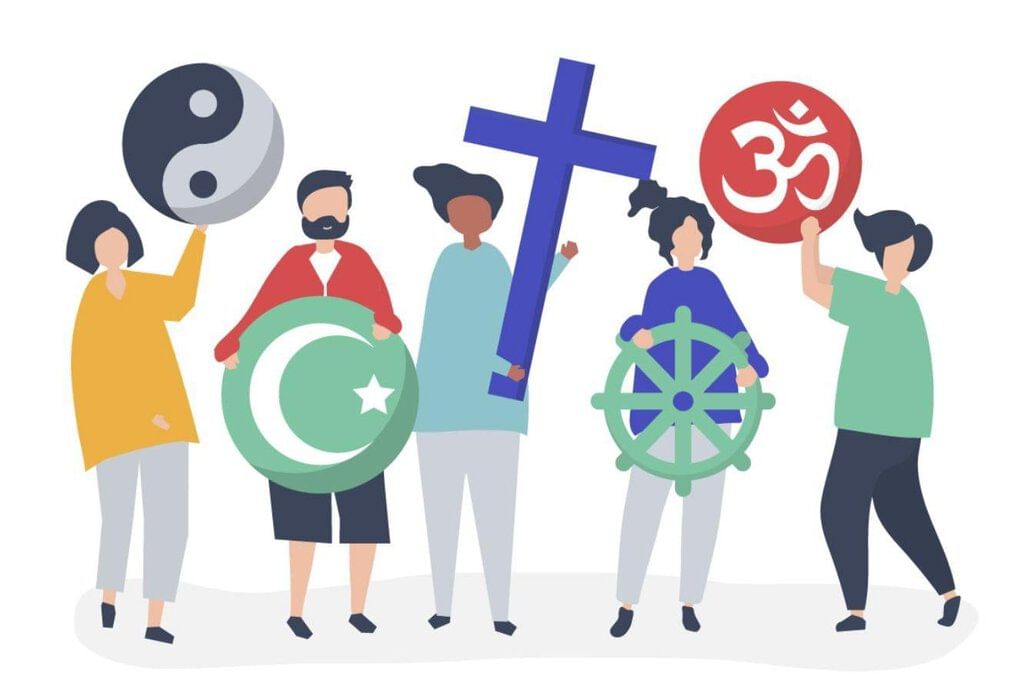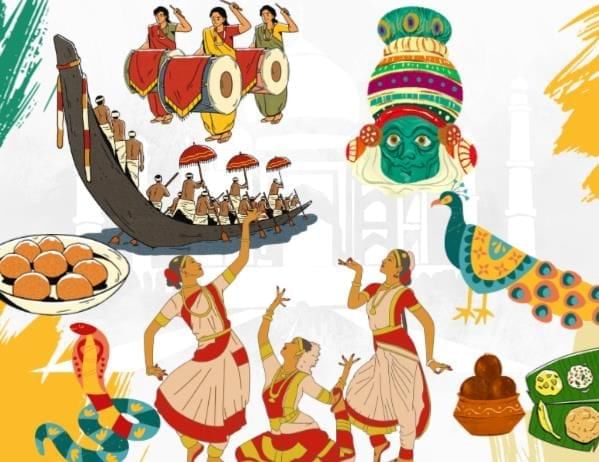Humanities/Arts Exam > Humanities/Arts Notes > Political Science Class 11 > NCERT Summary: Rights in the Indian Constitution-2
NCERT Summary: Rights in the Indian Constitution-2 | Political Science Class 11 - Humanities/Arts PDF Download
| Table of contents |

|
| Right to Freedom of Religion |

|
| Cultural and Educational Rights |

|
| Right to Constitutional Remedies |

|
| Directive Principles of State Policy |

|
| Conclusion |

|
Right to Freedom of Religion
- Hallmark of democracy; counters historical persecutions/conversions by rulers.

Freedom of Faith and Worship
- Article 25: Conscience freedom; profess/practice/propagate religion (includes voluntary conversion).
- Article 26: Manage religious affairs.
- Article 27: No tax for specific religion promotion.
- Article 28: Religious instruction in state institutions is optional.
- Restrictions for public order, morality, health (e.g., ban sati, bigamy, sacrifice); not the absolute-state roots of social evils.
- Tensions: Interventions seen as interference; the propagation right debated (inducement vs. genuine).
Equality of All Religions
- No official religion; equal treatment without favouritism, in jobs/education.
- State neutral: No preaching/religious education in institutions; sustains secularism (Article 14 non-discrimination on religion).
Cultural and Educational Rights
- India's society evokes images of diversity; not a monolithic structure but one with vast variations.
- In a diverse society, smaller social sections (minorities) exist compared to larger groups.
- The Constitution views diversity as a strength; thus, it includes the Fundamental Right for minorities to maintain their culture.
- Minority status is not limited to religion; it includes linguistic and cultural minorities.
- Definition of minorities: Groups sharing a common language or religion; outnumbered by others in a specific region or nationwide.
- Such communities possess a unique culture, language, and script; they have the right to conserve and develop these elements.
- All minorities (religious or linguistic) can establish and manage their own educational institutions to preserve and evolve their culture.
- Government, when providing aid to institutions, will not discriminate against those managed by minority communities.

Right to Constitutional Remedies
- An impressive list of Fundamental Rights (FRs) requires effective enforcement to be meaningful; without it, rights remain theoretical.
- Article 32 empowers citizens to directly approach the Supreme Court (SC) or High Courts (HCs) for violations, making remedies accessible and swift.
- Dr. B.R. Ambedkar described Article 32 as the "heart and soul" of the Constitution, emphasizing its central role in upholding FRs against state overreach.
- Courts issue special orders called writs to enforce rights:
1. Habeas corpus: Orders the production of an arrested person before the court; releases if the arrest is unlawful or the grounds are unsatisfactory.
2. Mandamus: Compels a public official to perform a legal duty neglected, protecting individual rights.
3. Prohibition: Issued by higher courts (HC/SC) to prevent lower courts from exceeding jurisdiction in ongoing cases.
4. Quo Warranto: Challenges a person's right to hold public office if unqualified, restricting unauthorized actions.
5. Certiorari: Directs a lower court/authority to transfer a case to a higher court for review or correction of errors.
Beyond the judiciary, additional mechanisms protect rights, especially for vulnerable groups:
National Human Rights Commission (NHRC): Established in 1993; led by a former Chief Justice of India (CJI), a former SC judge, a former HC Chief Justice, and two human rights experts.
- Functions: Inquires into violations (own initiative or complaints) like custodial deaths/rape, disappearances, police excesses; conducts jail visits; promotes research; issues guidelines (e.g., on custodial justice, police-human rights, sexual assault SOPs).
- Recommends actions to the government/courts but lacks prosecution power.
- Key interventions: Disappeared youth in Punjab; investigations/trials in Gujarat riots.
- National Commissions: For Minorities (protects religious/linguistic groups), Women (gender rights), and Scheduled Castes (SCs; anti-discrimination for Dalits).
- NGOs: People's Union for Civil Liberties (PUCL) and People's Union for Democratic Rights (PUDR) act as independent watchdogs, monitoring violations and advocating for the poor/illiterate/deprived.
Directive Principles of State Policy
- Framers foresaw challenges like equality/well-being; provided non-justiciable guidelines (no court enforcement) for moral/political force; people hold governments accountable.
- Separate list (Part IV) for flexibility, binding future decisions.
What Do the Directive Principles Contain?
Framers knew independent India would face challenges like achieving equality and well-being for all citizens; they needed policy directions, but without binding future governments rigidly.
- Guidelines incorporated but made non-legally enforceable: Cannot sue government in court for non-implementation; called "non-justiciable" (not enforceable by judiciary).
- Moral force and public accountability are expected to ensure governments take them seriously; a separate list in the Constitution known as the Directive Principles of State Policy (Part IV).
What Do the Directive Principles Contain?
- Lists mainly three things: Goals/objectives for society to adopt; certain rights for individuals beyond Fundamental Rights; certain policies for the government to adopt.
- Goals: Welfare of the people; social, economic, and political justice; raising the standard of living; equitable distribution of resources; promotion of international peace.
- Policies: Uniform civil code; prohibition of consumption of alcoholic liquor; promotion of cottage industries; prevention of slaughter of useful cattle; promotion of village panchayats.
- Non-justiciable rights: Adequate livelihood; equal pay for equal work for men and women; right against economic exploitation; right to work; early childhood care and education for children below the age of six years.
- Governments have implemented some: Passed zamindari abolition bills, nationalized banks, enacted factory laws, fixed minimum wages, promoted cottage and small industries, and provided provisions for reservations to uplift the scheduled castes and tribes.
- Other efforts: Right to education; formation of panchayati raj institutions; partial right to work under the employment guarantee programme; mid-day meal scheme.
Fundamental Duties of Citizens
- Added by the 42nd Amendment in 1976, it inserts a list of 10 Fundamental Duties.
- No enforcement mechanism in the Constitution.
- Examples: Abide by the Constitution; defend our country; promote harmony among all citizens; protect the environment.
- Enjoyment of rights is not dependent or conditional on fulfilling duties; inclusion does not change the status of Fundamental Rights.
Relationship Between Fundamental Rights and Directive Principles
- Complementary: Fundamental Rights restrain the government from certain actions; Directive Principles exhort the government to take positive steps.
- Fundamental Rights protect individuals; Directive Principles ensure the well-being of the entire society.
- Conflicts are possible when implementing Directive Principles clash with Fundamental Rights.
- Example: Zamindari abolition laws violated the right to property (original Fundamental Right); opposed as property infringement.
- The government amended the Constitution to prioritize Directive Principles, viewing societal needs > individual interests, which led to a long legal battle.
- Positions: Government rights can be abridged for Directive Principles (rights as a hindrance to welfare); Court-Fundamental Rights are sacred, cannot be limited even for Directive Principles.
- Right to Property context: The Original Constitution had a Fundamental Right to acquire/possess/maintain property, but allowable for public welfare; since 1950, many limiting laws.
- This is right central of debates; the 1973 Supreme Court decision: Right to property not part of basic structure, so Parliament can abridge via amendment.
- 44th Amendment (1978): Removed right to property from the Fundamental Rights list; converted to a simple legal right under Article 300A.
- Generated debate on amendments: Government-Parliament can amend any part; Court cannot violate Fundamental Rights.
- Settled by the Kesavananda Bharati case: Certain basic features of the Constitution are unchangeable by Parliament (detailed in Chapter 9: Constitution as a Living Document).
Conclusion
- Jotirao Phule (1827-1890): Early view rights include freedom/equality; the national movement sharpened to constitutional rights.
- Since 1950, the judiciary has protected/expanded rights (e.g., Article 21 scope).
- Government/administration functions within a framework; rights are limited for democratic governance.
The document NCERT Summary: Rights in the Indian Constitution-2 | Political Science Class 11 - Humanities/Arts is a part of the Humanities/Arts Course Political Science Class 11.
All you need of Humanities/Arts at this link: Humanities/Arts
|
43 videos|278 docs|39 tests
|
FAQs on NCERT Summary: Rights in the Indian Constitution-2 - Political Science Class 11 - Humanities/Arts
| 1. What are the key features of the Right to Freedom of Religion in the Indian Constitution? |  |
Ans. The Right to Freedom of Religion is enshrined in Articles 25 to 28 of the Indian Constitution. It guarantees individuals the freedom to profess, practice, and propagate their religion. Key features include the right to convert to another religion, the freedom to manage religious affairs, and the provision that ensures no one can be compelled to pay taxes for the promotion of any particular religion. Additionally, the state can regulate and restrict religious practices in the interest of public order, morality, and health.
| 2. How do Cultural and Educational Rights protect minorities in India? |  |
Ans. Cultural and Educational Rights, outlined in Articles 29 and 30 of the Indian Constitution, specifically safeguard the rights of minorities. Article 29 protects the cultural and educational interests of all sections of society, allowing minorities to preserve their distinct culture. Article 30 grants minorities the right to establish and administer educational institutions of their choice. This ensures that minorities can maintain their cultural identity and have access to education that reflects their values and beliefs.
| 3. What is the significance of the Right to Constitutional Remedies? |  |
Ans. The Right to Constitutional Remedies, detailed in Article 32 of the Indian Constitution, is a fundamental right that empowers individuals to approach the Supreme Court for the enforcement of their rights. This right serves as a safeguard against the violation of fundamental rights by the state or any authority. It enables citizens to seek justice and ensures accountability of the government, thereby reinforcing the rule of law and protecting individual liberties.
| 4. What are Directive Principles of State Policy, and how do they guide governance in India? |  |
Ans. The Directive Principles of State Policy, enshrined in Part IV of the Indian Constitution, serve as guidelines for the state in making laws and policies. While they are not justiciable (i.e., cannot be enforced by the courts), they aim to promote social and economic welfare, ensuring justice, liberty, equality, and fraternity. They guide the government in ensuring a fair distribution of wealth, improving living standards, and providing for the health and education of citizens, ultimately striving for a just society.
| 5. How do the rights mentioned in the Indian Constitution ensure the protection of individual freedoms? |  |
Ans. The rights enshrined in the Indian Constitution, including the Right to Freedom of Religion, Cultural and Educational Rights, and the Right to Constitutional Remedies, collectively ensure the protection of individual freedoms. They establish a framework for citizens to enjoy personal liberties while respecting the rights of others. The Constitution empowers individuals to seek redressal against violations and provides a mechanism for the enforcement of these rights, thereby promoting a democratic and equitable society.
Related Searches














